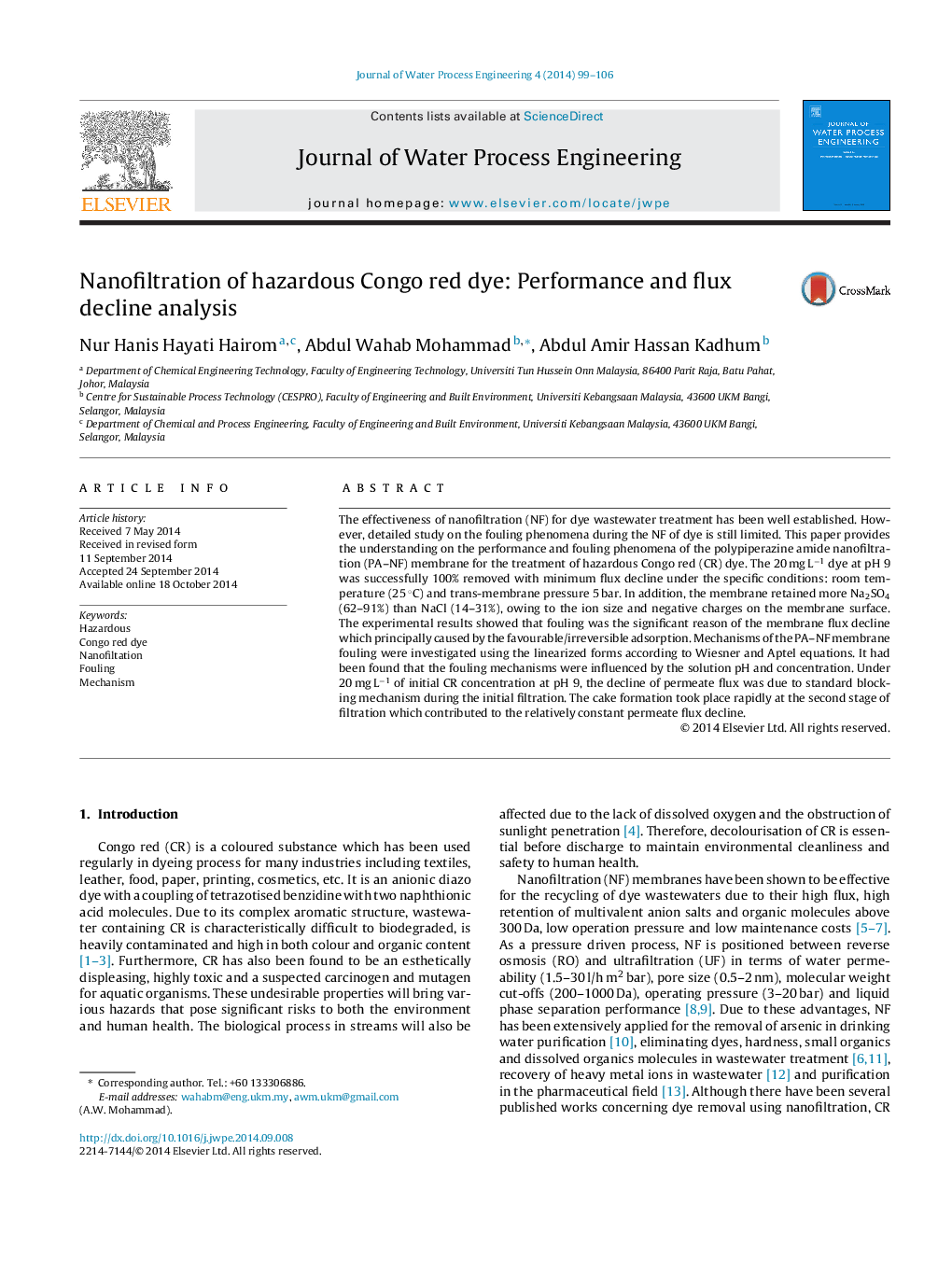| Article ID | Journal | Published Year | Pages | File Type |
|---|---|---|---|---|
| 232546 | Journal of Water Process Engineering | 2014 | 8 Pages |
The effectiveness of nanofiltration (NF) for dye wastewater treatment has been well established. However, detailed study on the fouling phenomena during the NF of dye is still limited. This paper provides the understanding on the performance and fouling phenomena of the polypiperazine amide nanofiltration (PA–NF) membrane for the treatment of hazardous Congo red (CR) dye. The 20 mg L−1 dye at pH 9 was successfully 100% removed with minimum flux decline under the specific conditions: room temperature (25 °C) and trans-membrane pressure 5 bar. In addition, the membrane retained more Na2SO4 (62–91%) than NaCl (14–31%), owing to the ion size and negative charges on the membrane surface. The experimental results showed that fouling was the significant reason of the membrane flux decline which principally caused by the favourable/irreversible adsorption. Mechanisms of the PA–NF membrane fouling were investigated using the linearized forms according to Wiesner and Aptel equations. It had been found that the fouling mechanisms were influenced by the solution pH and concentration. Under 20 mg L−1 of initial CR concentration at pH 9, the decline of permeate flux was due to standard blocking mechanism during the initial filtration. The cake formation took place rapidly at the second stage of filtration which contributed to the relatively constant permeate flux decline.
